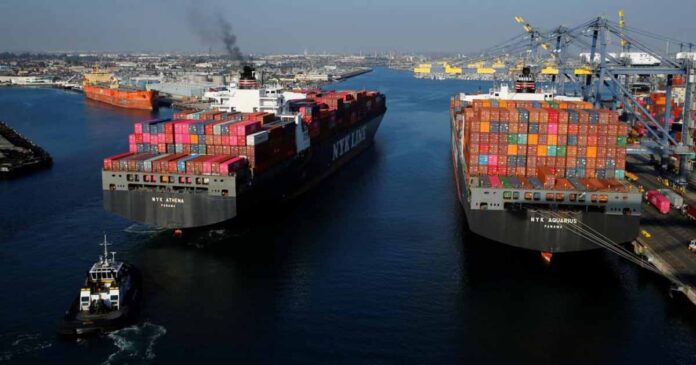After a more than four year hiatus, Pakistan is set to recommence fuel supply to seafaring ships. The change comes after Pakistan’s National Refinery Limited (NRL) announced they were successful in producing Very Low Sulphur Furnace Oil (VLSFO) this Monday.
The development is important because VLSFO is the only fuel approved by the International Maritime Organization for global sea voyages. Now that Pakistan’s national refinery has the capability of producing this oil for ships it will be able to supply fuel for freight which could also prove to be a big boost to the NRL.
But why exactly has Pakistan been out of the game for the past four years and how has NRL suddenly been able to produce the internationally approved fuel known as ‘bunker fuel’?
What is furnace oil?
Furnace oil, also known as heavy fuel oil (HFO), is a broad term encompassing fuels utilised to generate motion and heat, characterised by their notably high viscosity and density. The MARPOL Marine Convention of 1973 defines heavy fuel oil as having a density exceeding 900 kg/m³ at 15°C or a kinematic viscosity surpassing 180 mm²/s at 50°C. These oils contain a significant proportion of heavy molecules, including long-chain hydrocarbons and aromatics with extensive, branched side chains, lending them their distinctive black hue.
Predominantly used as marine fuel, HFO is currently the most extensively utilised marine fuel; almost all medium and low-speed marine diesel engines are designed to operate on heavy fuel oil. However, older steam locomotives and oil-fired power plants also harness energy from heavy fuel oils.
Heavy fuel oil is a residual product derived from the distillation of crude oil. The quality of this residual fuel is contingent on the quality of the crude oil processed in the refinery. To meet various specifications and quality standards, these residual fuels are blended with lighter fuels such as marine gas oil or marine diesel oil.
A quintessential distinction of heavy fuel oils lies in their sulphur content. Per the standards set by ISO 8217, the upper limit of their sulphur content is firmly capped at 3.5%. The main classes based on sulphur content are HSFO, Low Sulphur Furnace Oil (LSFO), VLSFO, and Ultra Low Sulphur Furnace Oil (ULSFO).
| Marine Fuel | Maximum Sulphur Content |
| HSFO | 3.5% |
| LSFO | 1.0% |
| VLSFO | 0.5% |
| ULSFO | 0.1% |
VLSFO is a new type of marine fuel that was introduced in January 2020 to comply with the International Maritime Organization (IMO) regulation that limits the sulphur content of ship fuels to 0.5%
The potential gains for NRL
“From my perspective, the transition towards VLSFO signifies a positive evolution for the sector. HSFO, now an antiquated and deficit-inducing product, has been obliging refineries to curtail production levels,” articulates Fahad Rauf, the distinguished Head of Research at Ismail Iqbal Securities.
“VLSFO, a preferred choice of the maritime industry, could emerge as a lucrative product. The tangible benefit would be contingent on the magnitude of the shift from HSFO to VLSFO,” Rauf elaborates.
The capacity of VLSFO to bestow immediate alleviation to NRL from the plethora of obstacles beleaguering the refinery sector is noteworthy. The exigency to metamorphose the slate towards products boasting higher margins is intense, particularly in an epoch characterised by stringent regulatory compliance and a concentration on the bottom line where every subtlety is consequential.
In addition, refineries are grappling with the task of procuring funding for their brownfield enhancement incentives, which are projected to be unveiled by the government in the imminent months. For such large-scale endeavors, the significance of dollar equity is paramount.
The Pakistan National Shipping Corporation (PNSC), poised to be NRL’s immediate patron, had earlier this year in March formalised a memorandum of understanding with ENAR Petroleum Refining Facility for the acquisition of VLSFO. The details of the arrangement could not be obtained at the time of writing.
Nonetheless, it is conceivable that PNSC still harbours unmet demand that NRL could fulfil. In the unlikely scenario of a disagreement, PNSC would be obligated to adhere from a regulatory vantage point, rendering a pact between both entities highly probable.
At present, NRL holds the distinction of being the solitary major oil refinery engaged in the production of VLSFO. Pakistan Refinery Limited had embarked on production two years prior but ceased operations shortly thereafter. While interest from various private refineries in producing VLSFO has been observed, no tangible developments have come to fruition as yet.





HOW TO CHECK PMT SCORE?